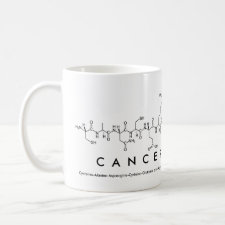
Authors: Fu Q, Sanbe H, Kagawa C, Kunimoto KK, Haginaka J
Article Title: Uniformly sized molecularly imprinted polymer for (S)-nilvadipine. Comparison of chiral recognition ability with HPLC chiral stationary phases based on a protein.
Publication date: 2003
Journal: Analytical Chemistry
Volume: 75
Issue: (2)
Page numbers: 191-198.
DOI: 10.1021/ac026039z
Abstract: Uniformly sized molecularly imprinted polymers (MIPs) for (S)- nilvadipine have been prepared by a multistep swelling and polymerization method using methacrylic acid, 2- (trifluoromethyl)acrylic acid, 2-vinylpyridine, or 4- vinylpyridine (4-VPY) as a functional monomer and ethylene glycol dimethacrylate (EDMA) as a cross-linker. The chiral recognition abilities of the MIPs for nilvadipine and other dihydropyridine calcium antagonists were evaluated using a mixture of sodium phosphate buffer (or water) and acetonitrile or only acetonitrile as the mobile phase. The (S)-nilvadipine- imprinted 4-VPY-co-EDMA polymers gave the highest resolution for nilvadipine among the MIPs prepared. In addition, the enantio-separation of nilvadipine was attained using the (S)nilvadipine-imprinted EDMA polymers, without use of a functional monomer. H-1 NMR and molecular modeling studies suggested a one-to-one hydrogen-bonding-based complex formation of (S)-nilvadipine with 4-VPY in chloroform. These results reveal that the (S)-nilvadipine-imprinted EDMA polymers could recognize the template molecule by its molecular shape, and that in addition to this recognition, hydrophobic and hydrogen- bonding interactions seems to play important roles in the retention and chiral recognition of nilvadipine on the 4-VPY- co-EDMA polymers in hydroorganic mobile phases. By optimizing chromatographic conditions such as column temperature and flow rate, the baseline separation of nilvadipine enantiomers was attained with a short analysis time and with a column efficiency comparable to commercially available chiral stationary phases based on a protein, such as ovomucoid or alpha(1)-acid glycoprotein



Join the Society for Molecular Imprinting

New items RSS feed
Sign-up for e-mail updates:
Choose between receiving an occasional newsletter or more frequent e-mail alerts.
Click here to go to the sign-up page.
Is your name elemental or peptidic? Enter your name and find out by clicking either of the buttons below!
Other products you may like:
 MIPdatabase
MIPdatabase









